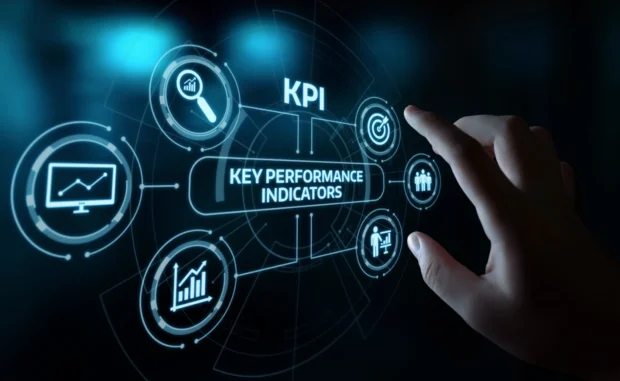In the intricate dance of commerce, data waltzes into the spotlight as the linchpin of triumph. Cultivating a data-centric ethos can unlock the hidden potential lurking within your organization, opening doors to innovation, collaboration, and enhanced decision-making. But where to begin? In this exposition, we shall meander through seven pivotal steps to nurture a data-driven culture in your enterprise, revealing the path to conquer challenges and seize opportunities that await in the era of data and analytics.
As the world of business becomes increasingly complex and competitive, the ability to harness the power of data and transform it into actionable insights is a vital key to success. Embracing a data-driven mindset allows organizations to not only make better-informed decisions but also to adapt and grow in a constantly changing landscape. By fostering a data-centric culture, companies can empower their teams, streamline operations, and ultimately propel themselves to new heights of performance and achievement.
In this comprehensive guide, we will delve deep into the essential components of building a thriving data-driven culture in 7 steps. From leadership commitment to fostering data literacy to empowering your analytics team, and inspiring data-guided decision-making, each step plays a crucial role in shaping the organization’s trajectory towards success. By comprehending and implementing these strategies, your organization will be better equipped to navigate the labyrinth of today’s data-driven world and forge a path towards a prosperous and sustainable future.

1) Leadership Commitment: The Genesis
The pilgrimage towards a data-centric culture springs forth from the summit. Leaders must orchestrate the symphony, exemplifying an unwavering dedication to data-guided decision-making. To demonstrate this commitment, leaders can:
- Host regular town hall meetings or workshops to articulate the significance of data and analytics to the organization
- Set and track data-centric goals and initiatives at the executive level, signaling their importance to the entire organization
- Encourage open dialogue between leadership and employees to facilitate collaboration and address data-related concerns
2) Identify Potential Barriers within the Organization
Every organization has its unique challenges, and it’s vital to recognize and address these barriers to foster a thriving data-driven culture. Be proactive by:
- Conducting a comprehensive analysis of your organization’s existing processes and mindset to identify potential hurdles
- Creating a cross-functional team to tackle these challenges, ensuring a well-rounded approach to problem-solving
- Developing and implementing change management strategies to help employees adapt to new data-centric workflows and expectations
3) Carve Clear Objectives and KPIs
Crafting lucid objectives and KPI examples is paramount to ensure harmonious alignment. KPIs, or key performance indicators, embody quantifiable values that delineate an organization’s efficacy in achieving its objectives. To set effective KPIs:
- Involve key stakeholders from various departments in the KPI development process to ensure a comprehensive understanding of organizational goals
- Prioritize a manageable number of KPIs to prevent overwhelming employees and diluting the focus
- Establish regular checkpoints for reviewing and adjusting KPIs, fostering a culture of continuous improvement

4) Cultivate Data Literacy
An organization’s data-centric culture is anchored in the data literacy of its workforce. Data literacy encapsulates the capacity to comprehend, interpret, and convey data. To hone data literacy:
- Develop a comprehensive training program tailored to various skill levels and job functions to boost data literacy across the organization
- Create opportunities for cross-functional collaboration, allowing employees to learn from one another and develop a shared understanding of data’s role in the organization
- Incentivize continuous learning by offering resources such as workshops, online courses, and mentoring programs
5) Procure Tools and Infrastructure
Possessing suitable tools and infrastructure is vital for informed, data-driven choices. To invest in the right tools, organizations should:
- Evaluate the unique needs of their organization and select tools that align with their objectives, budget, and technical capabilities
- Prioritize solutions that facilitate collaboration, data sharing, a single source of truth as well as scalability as the organization evolves
- Provide ongoing support and training to ensure employees can effectively utilize the tools and infrastructure provided
6) Empower Your Data Analytics Team
An empowered data analytics team is essential to drive a data-driven culture. Provide them with the autonomy, resources, and support they need to excel by:
- Encouraging collaboration between departments to leverage diverse perspectives and insights
- Facilitating access to data and resources to support their endeavors
- Recognizing and rewarding the team’s accomplishments, fostering motivation and pride in their work

7) Inspire Data-Driven Decision-Making
Ultimately, nurture an environment where data-guided decision-making reigns supreme. This necessitates a metamorphosis in mindset and processes throughout the organization. Ponder these tips to embark on thistransformation:
- Implement a reward system that acknowledges and celebrates data-driven decision-making, reinforcing its importance and value
- Encourage a culture of experimentation by allowing employees to test new ideas, while also learning from setbacks and iterating on their approach
- Establish a safe haven for employees to express opinions, question assumptions, and share insights without fear of retribution, fostering a collaborative and open environment
- By instituting these seven steps, your organization will journey towards a robust data-driven culture. This cultural metamorphosis will not only enhance decision-making but also bolster overall performance and competitiveness in the marketplace.
Summary of the Article’s Crux
Leadership Commitment: Secure top-level buy-in and lead by example.
Identify Potential Barriers: Recognize and address obstacles within the organization.
Define Clear Objectives and KPIs: Establish quantifiable targets and KPIs.
Cultivate Data Literacy: Elevate data literacy via training and cooperation.
Procure Tools and Infrastructure: Arm your team with user-friendly apparatus and platforms.
Empower Your Data Analytics Team: Provide support, resources, and autonomy for success.
Inspire Data-Driven Decision-Making: Promote a culture valuing data and experimentation.
By adhering to these steps, you’ll forge a vigorous data-driven culture capable of catapulting your organization towards heightened success in today’s competitive business arena.
Recall, the rewards of nurturing a data-centric culture extend beyond superior decision-making. A formidable data-driven organization fuels innovation, collaboration, and growth, ultimately culminating in a prosperous and sustainable future.
Take the plunge and sow the seeds of a data-driven culture today, allowing your organization to blossom and thrive in the age of data and analytics.
In conclusion, the journey towards a data-centric culture may appear daunting, but the rewards are bountiful. By embracing a data-driven mindset and implementing these seven steps, your organization will be better equipped to navigate the complex business landscape and remain competitive. So, take that first step and watch as your organization transforms, growing stronger and more innovative in the face of data-driven challenges and opportunities.
 Comeau Computing Tech Magazine 2024
Comeau Computing Tech Magazine 2024

